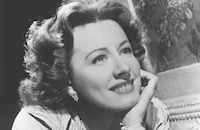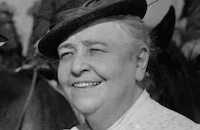Back Street

Cast & Crew
John M. Stahl
Irene Dunne
John Boles
George Meeker
Zasu Pitts
June Clyde
Film Details
Technical Specs

Synopsis
In the 1890's, Cincinnati born Ray Schmidt delights in flirting with the traveling salesmen who frequent her father's general store, despite the disapproving eye of her stepmother. When inventor Kurt Shendler proposes to her, she turns him down because she does not love him. Although she is virtuous, it is her first proposal because most men assume that she is "easy." By chance she meets financier Walter Saxel, and they fall in love, although he is engaged to be married. Ray is unable to keep an appointment to meet Walter's mother, because her sister is in trouble, and she does not see Walter again. Five years later, she and Walter meet on the streets of New York. They fall in love again over dinner, even though Walter has a wife, Corinne, and two children, Richard and Beth. Walter installs Ray in an apartment and she quits her job so they can see each other more easily. Walter's work and family keep him busy, however, and most of Ray's time is spent waiting for him. Walter takes his family on a business trip, leaving Ray alone with no income. When she rescues a neighbor from a fire, she learns the woman is in a similar situation with a married man, and advises her that "a woman can't be happy in the back streets of a man's life." Kurt, now a successful automobile manufacturer, comes to visit her and renews his proposal. Walter returns from his trip, but Ray is no longer willing to continue their affair, and accepts Kurt's proposal. Ray is unable to deny Walter's entreaty that she return, however, and she once again picks up her life of waiting. By 1932, she is an established part of Walter's life, and everyone knows about her except his wife. Walter is reliant upon her love and advice in all matters. She follows the family to Paris, where Walter keeps a separate apartment for her. One evening, Walter's son Richard confronts Ray and demands that she discontinue seeing his father. Walter intervenes and insists Richard stay out of this part of his life. The next morning, Ray reads in the paper that Walter suffered a massive stroke during the night and is dying. Barely able to speak, Walter urges Richard to call Ray, and he dies as he hears her voice over the phone. Because Walter made no provision for her in his will, Richard offers to support her. Completely devastated by Walter's death, Ray fantasizes about what would have happened if she had been able to meet his mother that day in the park. Desperate to be by Walter's side, she dies.

Director

John M. Stahl
Cast

Irene Dunne

John Boles

George Meeker

Zasu Pitts
June Clyde
William Bakewell
Arletta Duncan

Doris Lloyd
Paul Weigel

Jane Darwell

Shirley Grey
James Donlan

Walter Catlett

Robert Mcwade
Maude Turner Gordon
Rose Dione

Russell Hopton
James Farrell

Paul Fix
Betty Blythe
Mahlon Hamilton
Virginia Pearson
Gene Morgan

James Flavin
Caryl Lincoln
Beulah Hutton
Rosalie Roy
Tom Kerrigan
Crew
E. M. Asher
Milton Carruth
Sherman Clark
Fred Eldredge
Karl Freund
Charles D. Hall
Paul Hill
Ross Hoffman
C. Roy Hunter
Alan Jones
Carl Laemmle
Carl Laemmle Jr.
Carl Laemmle
Joe Lapis
Gladys Lehman
Maurice Pivar
John M. Stahl
Lynn Starling
Dave Werner

Film Details
Technical Specs

Quotes
Trivia
Notes
According to memos and letters in the MPAA/PCA collection at the AMPAS Library, the Hays office worked closely with director John Stahl and E. M. Asher during production to ensure that the resulting film did not offer a sympathetic view of infidelity and "kept women." Among the concerns of the Hays office was the portrayal of Ray's sister as being "in trouble," when Ray is prevented from meeting Walter's mother; Walter's use of a key to enter Ray's apartment; the portrayal of Walter's wife as a "narrow, smug person"; and the portrayal of Walter's son as a "snob," which the Hays office felt only served to "[throw] sympathy violently to Ray's point of view." Although a letter from the Hays office to Carl Laemmle, Jr., lauded Universal for maintaining discretion with the film, in 1935, Joseph I. Breen refrained from giving the MPPDA certificate of approval as "the portrayal of the 'kept woman' theme, and of the adulterous relationship between the two sympathetic leads...does not contain proper moral values to measure up to the requirements of the Code as currently administered." Again up for re-issue in 1938, Breen noted in a memorandum that the film "has become a symbol of the wrong kind of picture," as it was a "glorification" of the kept woman theme and a "condonation of adultery," and was one of a group of films that drew criticism of the film industry in the early thirties. A news item in Hollywood Filmograph notes that Rita Hayworth, then known as Rita Cansino, made her stage debut as a dancer with her cousin, Gabriel Cansino, in the musical review that accompanied the film's Los Angeles premiere. According to modern sources, Scott Beal was the assistant director. Also based on Fannie Hurst's novel are Universal's 1941 release Back Street, directed by Robert Stevenson and starring Margaret Sullavan and Charles Boyer; and their 1961 film of the same name, directed by David Miller and starring Susan Hayward, John Gavin and Vera Miles (see AFI Catalog of Feature Films, 1961-70; F6.0258












